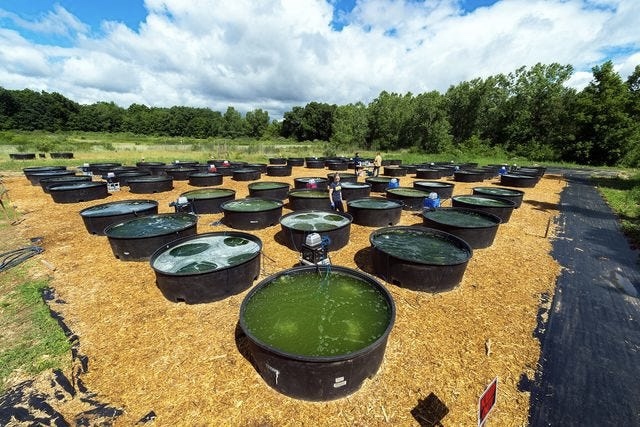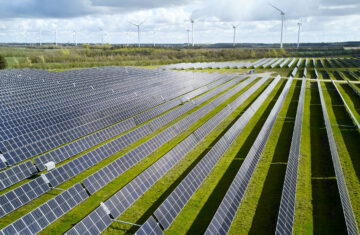Not Everyone Is Aware of These Renewable Energy Sources
With more people realizing that traditional fossil fuels are not a sustainable solution for our long-term energy needs, there has been a global shift towards renewable energy. There are a number of lesser-known renewable energy sources that have special potential and uses, even though the more well-known ones, like solar, wind, and hydropower, have been receiving a lot of attention. In this essay, we will explore the top 7 renewable energy sources that not everyone is familiar with.
1. Geothermal Energy
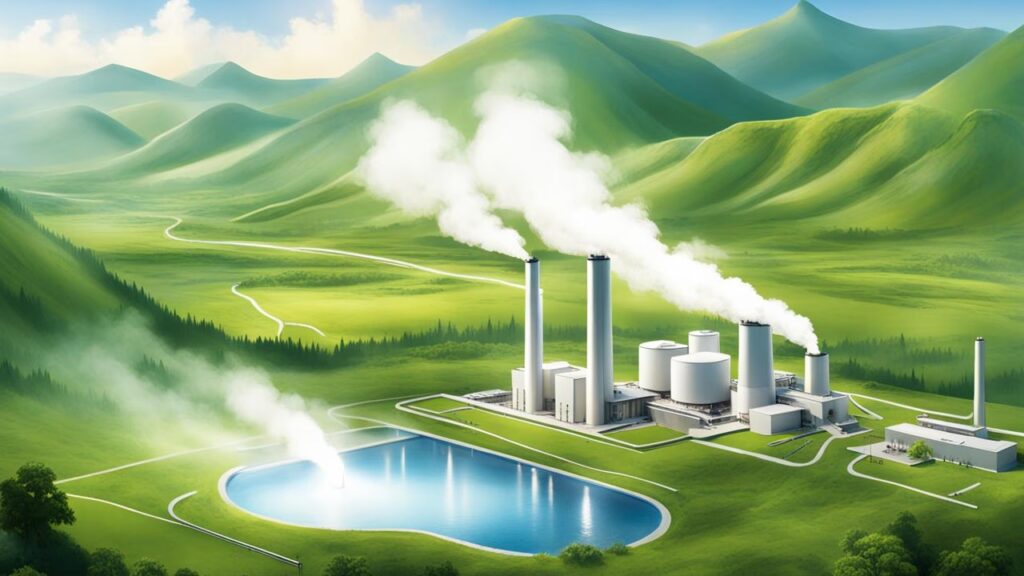
Geothermal energy is a sustainable energy source that derives its power from the heat produced in the Earth’s crust. The Earth’s core is continuously replenishing this heat, which can be used to create electricity or directly heat and cool buildings. Geothermal power plants are a consistent and dependable source of renewable energy because they run turbines using steam or hot water from subterranean reservoirs. High levels of volcanic and tectonic activity are found in places like Iceland, New Zealand, and the western United States, where geothermal energy is particularly common.
The main benefit of geothermal energy is its baseload power capability, which sets it apart from intermittent energy sources like solar and wind by being able to deliver a steady and dependable supply of electricity continuously. Because they do not need to burn fossil fuels, geothermal power plants can run with little environmental impact and a small land footprint. Ground-source heat pumps, which transfer heat between the Earth’s subsurface and buildings, can also be used to directly heat and cool buildings using geothermal energy, lowering the energy required for climate control.
2. Ocean Energy
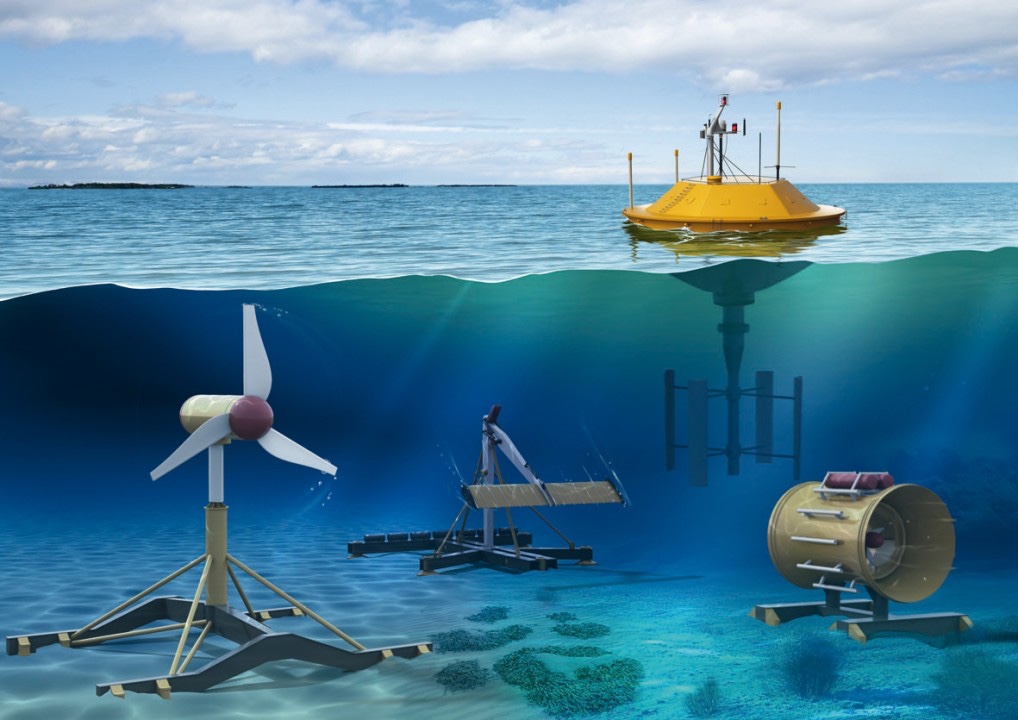
Ocean energy is the term used to describe the variety of renewable energy sources that can be found in the world’s vast oceans. This comprises wave energy, which gathers the kinetic energy of ocean waves, and tidal power, which uses the tides’ predictable ebb and flow. Furthermore, the temperature differential between the warmer surface waters and the colder deep ocean waters is used by ocean thermal energy conversion (OTEC) systems to produce electricity.
Tidal power systems provide a very consistent and dependable source of renewable energy. They work by harnessing the kinetic energy of tidal currents through the use of underwater turbines or barrages. Conversely, wave energy uses the continuously flowing ocean waves and can be transformed into electrical energy using devices like point absorbers or oscillating water columns. Even though OTEC systems are still in the early stages of development, by taking advantage of the temperature difference between the ocean’s surface and depths, they could eventually offer a reliable source of renewable electricity.
Even though it is still in its infancy, ocean energy has the potential to contribute significantly to the world’s renewable energy mix, especially in coastal areas with ideal ocean conditions. Ocean energy systems are predicted to become more efficient and cost-effective as technology develops, increasing their appeal as a renewable energy source.
3. Biomass Energy
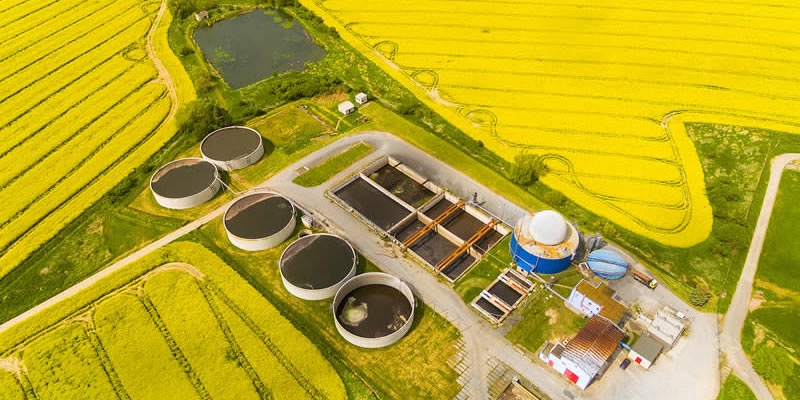
The process of converting organic materials, such as forest leftovers, energy crops, and agricultural waste, into usable energy forms, such as fuel for vehicles, heat, and electricity, is known as biomass energy. Since the carbon dioxide absorbed by the plants during their growth balances the carbon dioxide released during combustion or conversion, this renewable energy source is frequently referred to as carbon-neutral. Biomass energy is a flexible and adaptable renewable energy source since it can be produced by a number of methods, such as gasification, anaerobic digestion, and direct combustion.
Utilizing waste streams that would otherwise be discarded, such as forestry byproducts, municipal solid waste, and agricultural residues, is one of the main benefits of biomass energy. Biomass systems can help divert waste from landfills and lower greenhouse gas emissions by turning these waste materials into energy. Furthermore, biofuels like ethanol and biodiesel that can be used in place of conventional fossil fuels in the transportation industry are produced from biomass.
Even though biomass energy has certain drawbacks, such as the requirement for a consistent and sustainable feedstock supply, it is still a significant part of the renewable energy landscape, especially in areas with an abundance of forestry or agricultural resources.
4. Hydrogen Energy
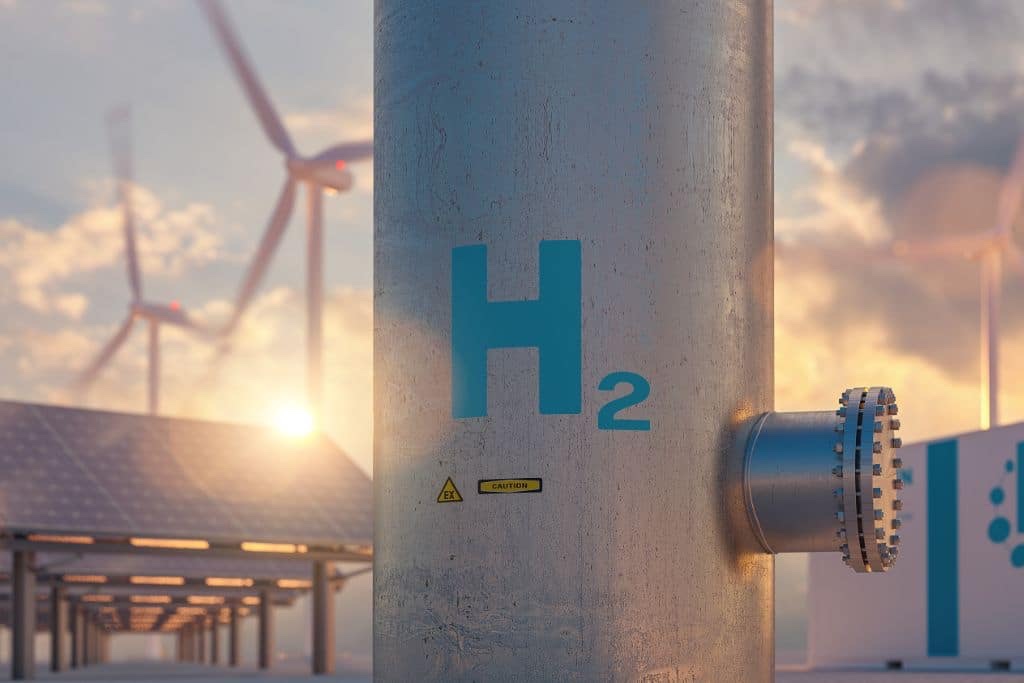
Hydrogen is frequently referred to as the “fuel of the future” because of its potential to be extremely important in the shift to a sustainable energy economy. Water molecules are split into hydrogen and oxygen through a process called electrolysis, which can be done with renewable energy sources like solar, wind, or hydropower to produce hydrogen. After that, this “green hydrogen” can be used as a clean fuel for vehicles or to produce electricity in fuel cells.
Hydrogen energy’s adaptability and potential for use in a variety of contexts, including industrial processes, transportation, and power generation, are among its main benefits. An emission-free substitute for conventional internal combustion engines is provided by hydrogen fuel cells, which use the chemical energy of hydrogen and oxygen to produce electricity. Hydrogen is a potentially useful energy carrier that can help mitigate the intermittent nature of other renewable energy sources like solar and wind power. It can also be stored and transported.
Though there are still certain difficulties in producing and storing hydrogen, advances in hydrogen technologies are becoming more and more popular, especially in the transportation and industrial domains. Hydrogen is anticipated to become more significant in the context of renewable energy sources as long as research and investment keep pushing technological breakthroughs in this area.
5. Waste-to-Energy

The notion of “waste-to-energy” has garnered significant interest in the pursuit of sustainable energy solutions. With this method, waste materials such as agricultural and municipal solid waste are transformed into energy that can be used to produce fuel for vehicles, heat, or electricity. Technologies that break down the organic components of waste and capture the energy released during the process, such as anaerobic digestion, incineration, or gasification, may be used in the process.
Waste-to-energy is an important part of a circular economy because it not only produces renewable energy but also lessens the environmental impact of waste disposal. Waste-to-energy systems can help to mitigate the release of methane, a potent greenhouse gas, and reduce the need for fossil fuels in power generation and transportation by diverting waste from landfills and turning it into a useful energy source.
Furthermore, valuable materials like metals and plastics can be extracted from the waste stream by waste-to-energy systems, which promotes the circular economy and lowers the need for virgin resources.
Because of worries about air pollution and the effects on the environment, waste-to-energy technologies have historically been met with some skepticism from the public. However, advances in emission control and waste processing technologies have helped to address these concerns, making waste-to-energy a more viable and sustainable option for producing renewable energy.
6. Hydrokinetic Energy

Hydrokinetic energy, also known as hydrokinetic power, is a form of renewable energy that harnesses the kinetic energy of flowing water, such as in rivers, tidal streams, and ocean currents. Hydrokinetic energy systems capture the energy of moving water without the need for extensive infrastructure, in contrast to traditional hydropower, which depends on the potential energy of water stored behind dams.
These systems provide a viable substitute for traditional hydropower projects in coastal areas and areas with strong water currents, as they can be installed as floating or submerged turbines, all without having the negative environmental effects. Hydrokinetic energy systems are an environmentally friendly alternative to other methods of harnessing the power of moving water because they can be installed more easily and often with little disturbance to the surrounding ecosystem.
The capacity of hydrokinetic energy to function in regions where conventional hydropower might not be practical, such as shallow rivers or places with inadequate infrastructure, is one of its main advantages. Furthermore, hydrokinetic systems can be made to be modular and scalable, which makes it possible to install smaller, dispersed generation units that are customized to the unique features of a particular location.
Hydrokinetic technologies are expected to be increasingly integrated into the mix of renewable energy sources as research and development in this field progresses, especially in areas with strong river, tidal, or ocean currents.
7. Algae Biofuels

The microscopic aquatic creatures known as algae are present in both freshwater and saltwater habitats and have gained attention as a potential renewable energy source. Through procedures like lipid extraction and anaerobic digestion, certain species of algae can be grown and transformed into biofuels like biodiesel, bioethanol, and biogas.
Since they can be made from easily accessible resources like carbon dioxide, wastewater, and non-arable land, algae biofuels are regarded as a sustainable substitute for traditional fossil fuels. Algae-based fuels are a desirable alternative for lowering greenhouse gas emissions because they may also be carbon-neutral or even carbon-negative.
High productivity is one of the main benefits of algae biofuels; certain species can yield much more oil per unit of land area than conventional biofuel crops like soybeans or corn. Additionally, algae can be grown in a range of conditions, such as wastewater and brackish water, which minimizes competition with food production and the need for fresh water resources.
The viability and scalability of algae biofuels are being improved by continuous research and development in areas such as strain optimization, cultivation techniques, and conversion processes, even though commercial-scale production of these energy sources is still in its early stages. Algal biofuels are anticipated to become more significant in the shift to a more sustainable energy future as technology advances.
While not as well-known as solar, wind, and hydropower, these seven renewable energy sources have special benefits and the potential to diversify the world’s energy supply. We may anticipate seeing a growing amount of these lesser-known renewable technologies integrated into the energy landscape as research and development in these areas progresses, which will help to create a more resilient and sustainable energy future.
